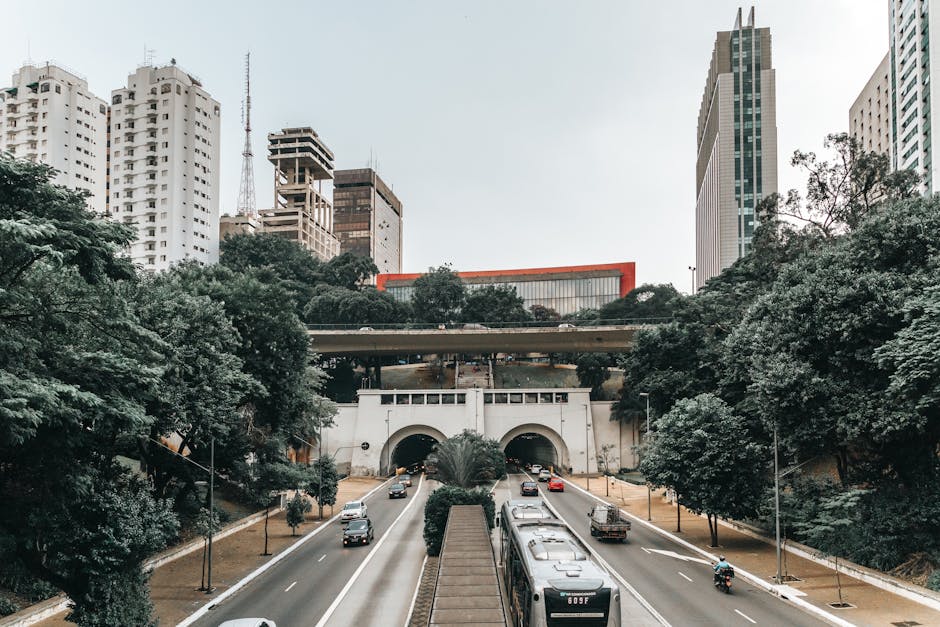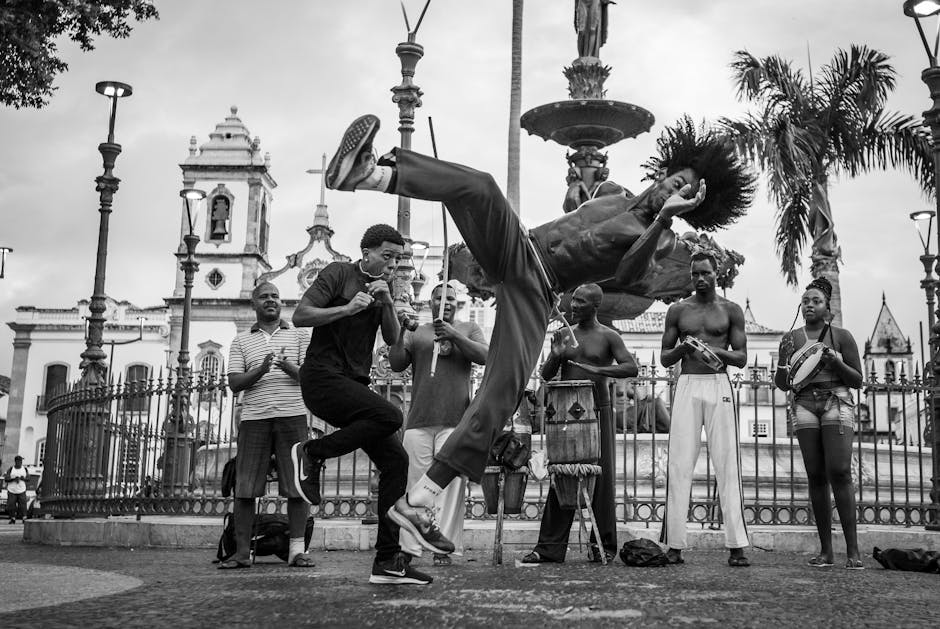- So, You're Thinking About Brazil? Let's Talk Culture.
- The Heart of Brazil: Warmth, Family, and the 'Jeitinho'
- Personal Space? It's a Cozy Concept
- The All-Important Greeting: Mastering the 'Beijinho'
- What Time Is It? Understanding Brazilian Punctuality
- The Lively Art of Brazilian Conversation
- Good Topics & Topics to Navigate with Care
- Dining Etiquette: From 'Churrasco' to 'Cafezinho'
- Being a Gracious Guest
- The 'Churrasco': More Than Just a BBQ
- The Ritual of 'Cafezinho'
- One Country, Many Cultures: The Power of Regional Diversity
- Business Etiquette: Building Relationships First
So, You’re Thinking About Brazil? Let’s Talk Culture.
When you hear “brazil,” what’s the first thing that pops into your head? For many, it’s a vibrant montage of Carnival dancers in dazzling feathers, legendary soccer players scoring impossible goals, and sun-drenched beaches like Copacabana. And while those things are absolutely part of the Brazilian tapestry, they’re just the brightly colored threads on the surface. The real magic of Brazil lies in its people, its complex social fabric, and a rhythm of life that’s entirely its own.
Forget the clichés for a moment. We’re going to pull back the curtain and explore the everyday etiquette and deep-seated cultural values that make Brazil one of the most fascinating places on earth. Think of this as a conversation with a friend who’s been there and wants to give you the real scoop, so you can connect with the country and its people on a much deeper level.
The Heart of Brazil: Warmth, Family, and the ‘Jeitinho’
At its core, Brazilian culture is profoundly human-centric. Relationships, connections, and emotions often take precedence over rigid rules and schedules. This is the first and most important thing to understand.
Personal Space? It’s a Cozy Concept
If you’re from North America or Northern Europe, you might be used to a personal “bubble.” In Brazil, that bubble is much, much smaller. Brazilians are physically expressive and affectionate. It’s common to stand close when talking, touch someone’s arm to emphasize a point, and greet friends, family, and even new acquaintances with a warmth that can be surprising at first. Don’t be alarmed by the lack of distance; it’s a sign of friendliness and acceptance.
The All-Important Greeting: Mastering the ‘Beijinho’
A simple handshake often won’t cut it in social situations. The standard greeting between women, and between men and women, is the *beijinho*, or cheek kiss. But here’s the tricky part: the number of kisses varies by region!
- In São Paulo, it’s typically one kiss on the right cheek.
- In Rio de Janeiro, it’s two kisses, one on each cheek.
- In some parts of Minas Gerais or the Northeast, it might even be three!
When in doubt, let the local take the lead. For men greeting other men, a firm handshake with a friendly pat on the back is the norm. In any case, strong eye contact and a genuine smile are non-negotiable.

What Time Is It? Understanding Brazilian Punctuality
Let’s talk about time. In Brazil, the clock is often more of a friendly suggestion than a strict command, especially in social settings. If you’re invited to a party or a barbecue (*churrasco*) at 8 PM, showing up right on the dot might mean you’re the first one there, potentially catching the host still in the shower. Arriving 30-45 minutes “late” is not just acceptable; it’s often expected.
Why? Because life happens. Traffic is unpredictable, a conversation with a neighbor ran long, or they just wanted to finish a chapter of their book. The event is about the people, not the schedule. However, this flexibility has its limits. For more formal occasions, like a business meeting, a doctor’s appointment, or a flight, punctuality is much more important. Even then, a 10-15 minute delay is often par for the course. The key is to relax and go with the flow.
The Lively Art of Brazilian Conversation
Brazilians are fantastic storytellers and engaged listeners. Conversations are lively, passionate, and often overlapping. Interrupting someone isn’t necessarily seen as rude; it’s a sign that you are actively listening and excited about the topic. It’s a dance of words, with people jumping in to add their own flair and experiences.
Good Topics & Topics to Navigate with Care
You’ll find it incredibly easy to strike up a conversation. Safe and beloved topics include:
- Family: Asking about someone’s family is always a good starting point.
- Food: Brazilians are proud of their cuisine. Ask for recommendations!
- Music & Travel: Share your favorite Brazilian artists or ask about their favorite places to visit in their vast country.
- Soccer (Futebol): It’s a national passion, but be careful! It’s like religion. You can praise the national team, but avoid criticizing a local team unless you know where their loyalties lie.
Topics to be more cautious about, as in many cultures, include politics and religion. Also, while it may seem fun, avoid making jokes that pit Brazil against Argentina unless you’re with close friends who enjoy that kind of banter.
Dining Etiquette: From ‘Churrasco’ to ‘Cafezinho’
Food is the centerpiece of social life in Brazil. Being invited to someone’s home for a meal is a true honor and a sign of genuine friendship.
Being a Gracious Guest
If you’re invited over, it’s customary to bring a small gift for the host. A bottle of wine, a nice dessert from a local *padaria* (bakery), or flowers are all excellent choices. One small tip: avoid purple or black flowers, as they are associated with mourning. When at the table, table manners are generally European-style. Keep your hands visible (don’t rest them in your lap) and use a knife and fork for almost everything, including items like pizza and fruit. Eating with your hands is less common than in the US.

The ‘Churrasco’: More Than Just a BBQ
A Brazilian *churrasco* is an event. It’s an all-day affair filled with grilled meats, flowing drinks (*caipirinhas* are a must!), loud music, and non-stop conversation. It’s not about eating and leaving; it’s about spending quality time together. Pace yourself, enjoy the various cuts of meat as they come off the grill, and soak in the vibrant, communal atmosphere.
The Ritual of ‘Cafezinho’
Coffee in Brazil isn’t just a morning pick-me-up; it’s a symbol of hospitality. A *cafezinho* (a small, strong, sweet coffee) is offered everywhere—in homes, offices, and even some shops. Accepting it is a polite and friendly gesture. It’s a moment to pause, connect, and converse.
One Country, Many Cultures: The Power of Regional Diversity
It’s a massive mistake to think of Brazil as a single, uniform culture. The country is larger than the contiguous United States, and its regions are as different from one another as Texas is from New York.
- The Southeast (Rio de Janeiro, São Paulo): The economic and cultural engine. Rio is famous for its laid-back beach culture and Carnival, while São Paulo is a bustling, cosmopolitan megacity with a world-class food scene and a more business-focused mindset.
- The Northeast (Bahia, Pernambuco): The heart of Afro-Brazilian culture. Here you’ll find a unique rhythm of life, incredible music like Axé and Frevo, and a distinct cuisine heavy with palm oil and coconut milk. Salvador, the capital of Bahia, feels like a world away from São Paulo.
- The South (Rio Grande do Sul, Santa Catarina): Heavily influenced by German and Italian immigrants, this region has a more European feel. You’ll find *gaúcho* (cowboy) culture, a love for steak, and the tradition of drinking *chimarrão* (a type of mate tea).
- The North (Amazonas): Dominated by the Amazon rainforest, this region’s culture is deeply connected to nature and indigenous traditions. The food is exotic, featuring river fish and fruits like açaí in its purest form.
Acknowledging and appreciating this diversity will show a level of understanding that goes far beyond the average tourist.

Business Etiquette: Building Relationships First
If you’re in Brazil for work, remember that business is personal. Brazilians prefer to do business with people they know and trust. The first meeting might be almost entirely dedicated to getting to know each other. Don’t rush into business talk. Ask about their family, their weekend, their favorite soccer team. This rapport-building is not just pleasantry; it’s a crucial part of the process.
Meetings may start a bit late and can seem unstructured, with multiple people talking at once. Dress code is important; Brazilians, especially in business hubs like São Paulo, dress smartly and take pride in their appearance. A stylish suit or elegant dress will be well-received. The ultimate goal is to build a strong, long-term partnership, not just to close a one-time deal.





